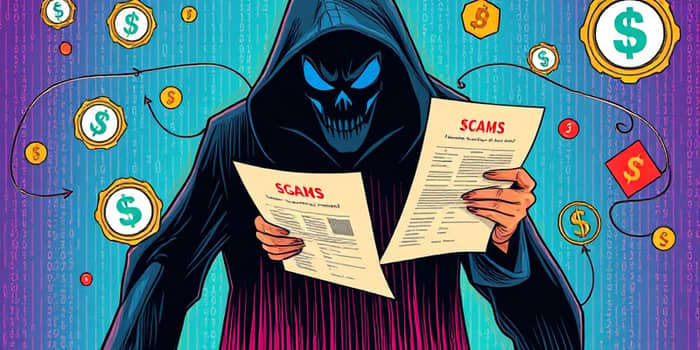
As personal loans become more accessible, scammers are innovating new ways to exploit unsuspecting borrowers. Understanding these modern threats and learning how to protect yourself is crucial in today’s fast-paced financial landscape.
In early 2025, the financial sector witnessed a 40% increase in loan fraud compared to the previous year. Business and personal loan fraud jumped from 23,411 to 28,081 reported cases in just one quarter, while global markets saw similar surges.
India alone reported a 38% year-over-year spike in loan fraud cases by early 2025. Meanwhile, synthetic identity schemes—where criminals create new, convincing personas—rose by 18% in 2024, exposing lenders to a record $3.2 billion in potential losses.
Personal loan adoption is also climbing: 24.6 million Americans held personal loans in Q1 2025, up 4.7% year-over-year, with total debt reaching $253 billion. However, 3.49% of these loans were already 60 days or more past due, indicating stress that scammers exploit.
A borrower in Mumbai urgently needed funds and found an ad promising “Instant Loans, No Paperwork.” Approved in minutes, he was instructed to pay a ₹5,000 processing fee. After payment, the lender vanished—no loan, no refund.
This scenario illustrates how fraudsters exploit urgency and minimal paperwork to ensnare victims. By the time borrowers realize the truth, financial damage is done.
Scammers continually adapt, leveraging new technologies and tactics:
Deepfake and AI-driven scams are on the rise, with realistic voice and video impersonations of both clients and bank staff.
Synthetic identity fraud now accounts for a larger share of losses in personal and auto loans, outpacing traditional account manipulation. Victims often discover fraud only when credit checks fail or unexpected collection calls arrive.
Globalization of scams means fraudsters cross borders digitally, targeting victims worldwide through social media, pop-up ads, and unsolicited messages.
Personal loan scams are evolving rapidly, but so are consumer defenses. By staying informed, scrutinizing offers, and leveraging available resources, you can safeguard your finances and avoid falling victim to these increasingly sophisticated schemes.
Empower yourself with knowledge—understanding the red flags and tactics used by scammers is your strongest shield. Always approach loan offers with vigilance, verify credentials, and remember that legitimate lenders value transparency and security above all.
References













